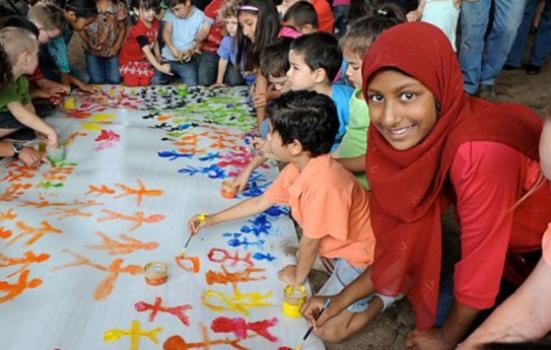Arts Council England responds to questions from ArtsProfessional and the sector exploring its plans for the next 10 years.

DIAC Images
Arts organisations will likely be responsible for setting their own diversity targets in future, Arts Council England (ACE) says.
As part of a series of questions put to ACE by ArtsProfessional and the sector, ACE’s Diversity Director Abid Hussain was asked if a planned new diversity framework will be used to assess organisations against the proposed funding criterion of ‘inclusivity and relevance’.
He said the funder expects aspiring National Portfolio Organisations to use the framework to demonstrate “how they will improve the inclusivity of their organisation” across their boards, workforce, audiences and programmes and outline steps they will take to “increase their relevance” to their communities and stakeholders.
“The role of ACE will be to ensure that [organisations’] targets are stretching enough and to make decisions on future funding based on performance against those targets.”
The funder’s frameworks for assessing relevance and diversity are still being designed “using input from the sector”, said Hussain.
Importance of inclusivity
He is among several ACE policy leads who have shared their thinking with ArtsProfessional on the funder’s draft strategy for the next ten years. This follows a series of blogs from the organisation’s Deputy Chief Executive for Arts and Culture, Simon Mellor, outlining the strategy’s key outcomes and investment principles.
In his responses, Mellor notes that new technologies and other societal changes have altered the way culture is made, shared and defined, and says ACE must adapt its funding priorities in response: “As a national development agency, we have to keep abreast of those changes and use our expertise and judgement to evolve the types of cultural activities that we will support over the next decade.”
Supporting artists
The funder also says it plans to increase its support for individual artists. Helen Parrott, ACE’s Senior Manager for Strategic Partnerships, Skills and Workforce, said ACE wants to build on its current artist development fund to better support creative practitioners and address “a gap between our investment in children and young people and the progression to becoming a professional artist”.
“We’re still working on the details of this, but it might include things like increasing our investment in independent artists, better support for independent artists from publicly funded organisations and better careers information.”
Mellor added that ACE must balance the need to account for its investments with creating and advocating for the wider benefits of culture and creativity, saying: “we fundamentally believe that artists should be able to make brilliant work … indeed we would like to invest more money in individual artists.”
But he suggested that the strategy would not offer any new measures in response to widespread concerns about unfair and inadequate pay in the arts sector, saying “we already ask applicants to demonstrate their commitment to fair pay and we will continue to do so”.
More productive partnerships
ACE’s draft strategy stresses the importance of partnership working, but recent evaluations of initiatives backed by the funder have found challenges in encouraging organisations to work together.
Many Local Cultural Education Partnerships have barely got off the ground, participants in the Great Place Scheme have been urged to “review the ambition of the projects against practicalities”, and its audience development programme, Creative People and Places, has been marred by perceptions of “snobbery” between organisations.
ACE’s Strategic Partnerships Director Paul Bristow said the agency is learning alongside programme participants about how good partnerships are built: “It takes time, energy, stamina and putting cards on the table with people who you may see as competitors, rivals or just from a very different sector to you. It can go wrong, it can be tough, slow and painful.
“But it can also make things happen that just wouldn’t happen without that collision of experience, perspectives and expertise, and ultimately, it’s often where creativity, innovation and progress come from.”
Bristow says ACE wants more research into the impact of partnerships with healthcare organisations in particular so cultural organisations can “make informed and supported steps into this arena if it is of interest to them”.



